Songpyeon (Korean Chuseok Rice Cake)
Songpyeon (송편) are soft, chewy half-moon rice cakes made for Chuseok, Korea’s Thanksgiving. Discover their tradition and learn how to make them at home.
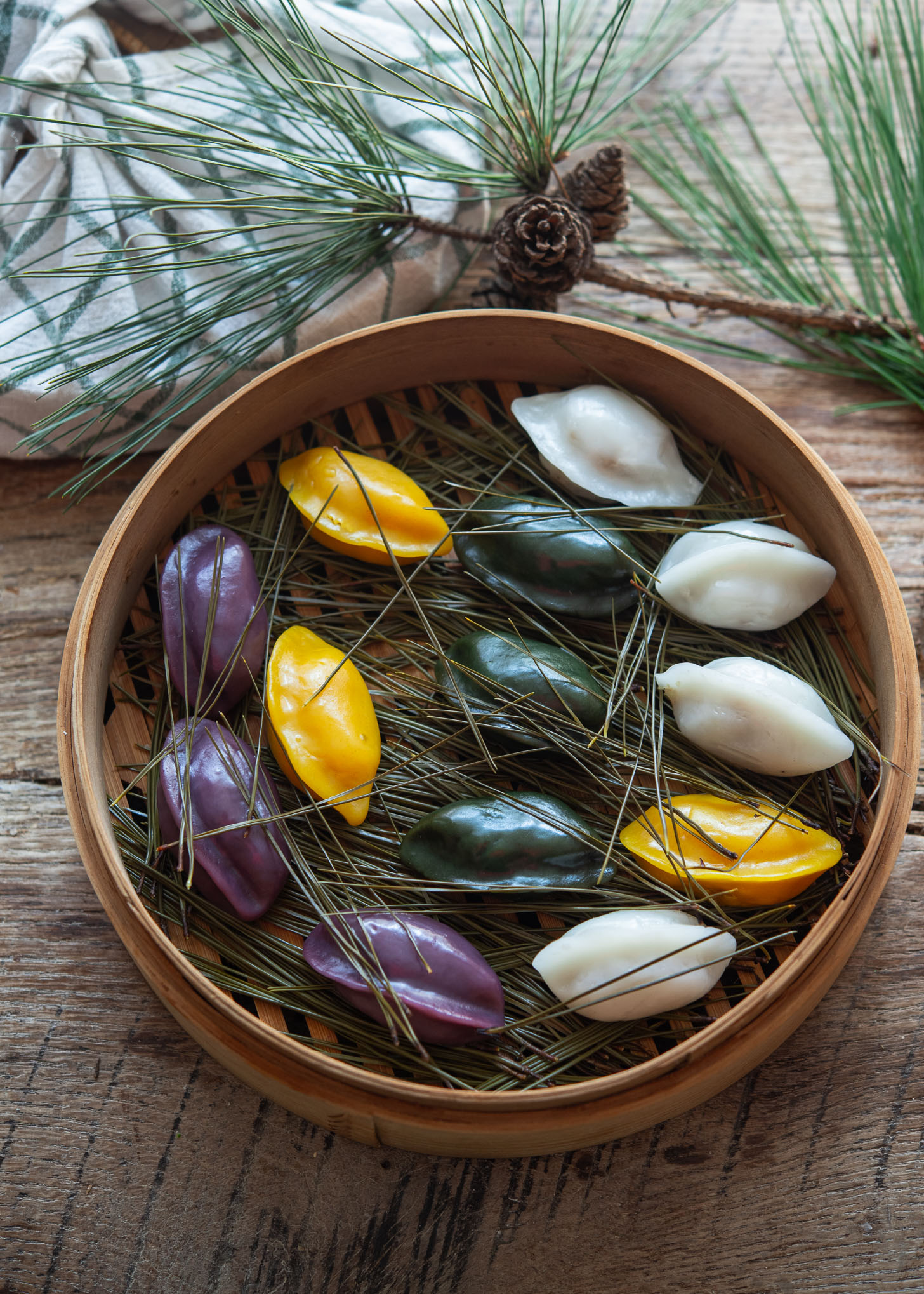
Every year during Chuseok, Korea’s harvest festival, families gather to make Songpyeon (송편)—half-moon rice cakes filled with sweet sesame, chestnut, or red bean. More than just a holiday treat, Songpyeon carries tradition, symbolism, and memory.
Steamed over pine needles for fragrance and shaped by hand at the kitchen table, these little rice cakes are a way to honor the harvest and share in family togetherness. I still remember my aunts saying that if I made beautiful Songpyeon, I would someday have beautiful daughters—a bit of folklore that always made us laugh. Looking back now, I think they were right, because I was blessed with a pretty daughter of my own.

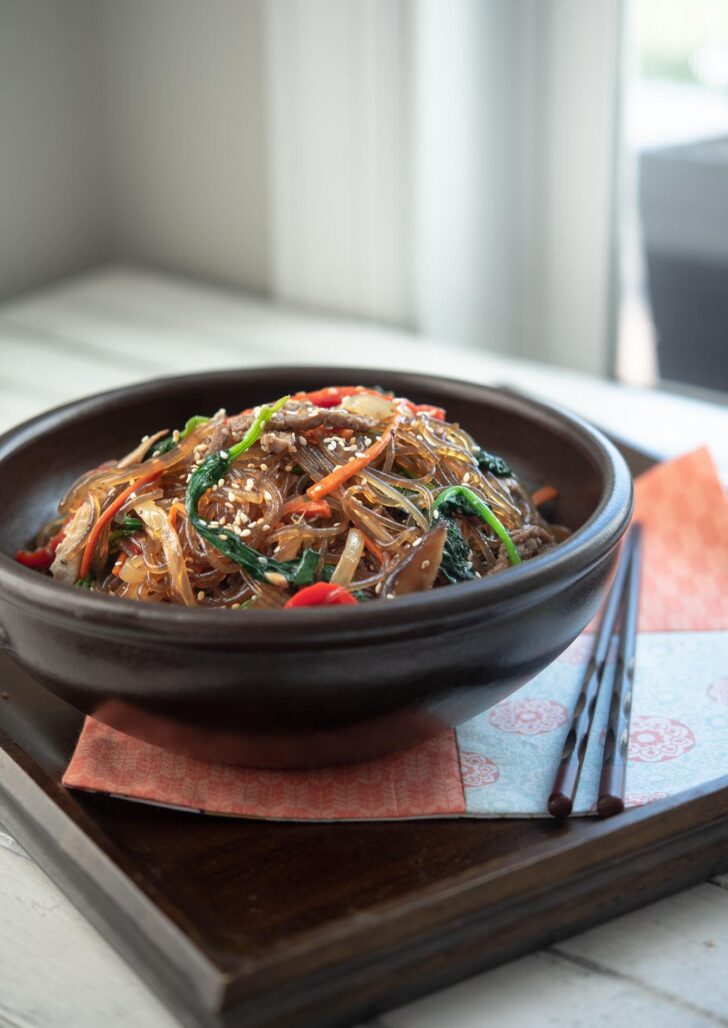
Get new recipes via email:
In my family, the ritual of making Songpyeon was filled with chatter, laughter, and the quiet pride of creating something meaningful. My first attempts were clumsy—split dough and leaky fillings—but over time I learned the rhythm of shaping, and the task became a source of pride that tied me to my heritage and the heart of Chuseok.
In this post, I’ll show you how to make Songpyeon at home with the same flavors, colors, and techniques my family passed down. And if you’d like to explore beyond rice cakes, see my Chuseok food recipes collection for more festive dishes.
Essential Ingredients for Chuseok Rice Cakes

Short-grain rice flour (쌀가루):
Songpyeon dough is made with wet rice flour—short-grain rice that has been soaked in water before grinding. This process builds in just the right amount of moisture, giving the dough its hallmark chewy, elastic texture.
Dry rice flour, by contrast, is milled straight from raw grains. It’s convenient, but the flour lacks moisture, so it requires extra water and a longer resting time to hydrate properly.
Even then, the dough may not achieve the same smoothness as wet flour. From experience, I recommend wet rice flour whenever possible for consistent results, but I’ve included tips below if dry flour is your only option.
Natural food colors:
Traditionally, Koreans use natural coloring from dried vegetable powders such as pumpkin, mugwort, or purple sweet potato. These not only tint the dough but also add a subtle earthy flavor that feels true to Chuseok cooking. I don’t recommend artificial coloring—it looks bright but offers no taste and takes away from the authenticity of the rice cakes.
You can experiment with fruit or vegetable purées for variation, but the extra moisture means you’ll need to adjust the water carefully to keep the dough workable. From my own experience, powders give the most consistent results—the colors come out deeper, more even, and closer to what I grew up seeing at holiday tables.

Sweet fillings:
The most common filling is crushed sesame seeds mixed with sugar and honey, but red beans, peanuts, walnuts, or chestnuts are also traditional. Each bite should feel like a little surprise—nutty, sweet, and fragrant.
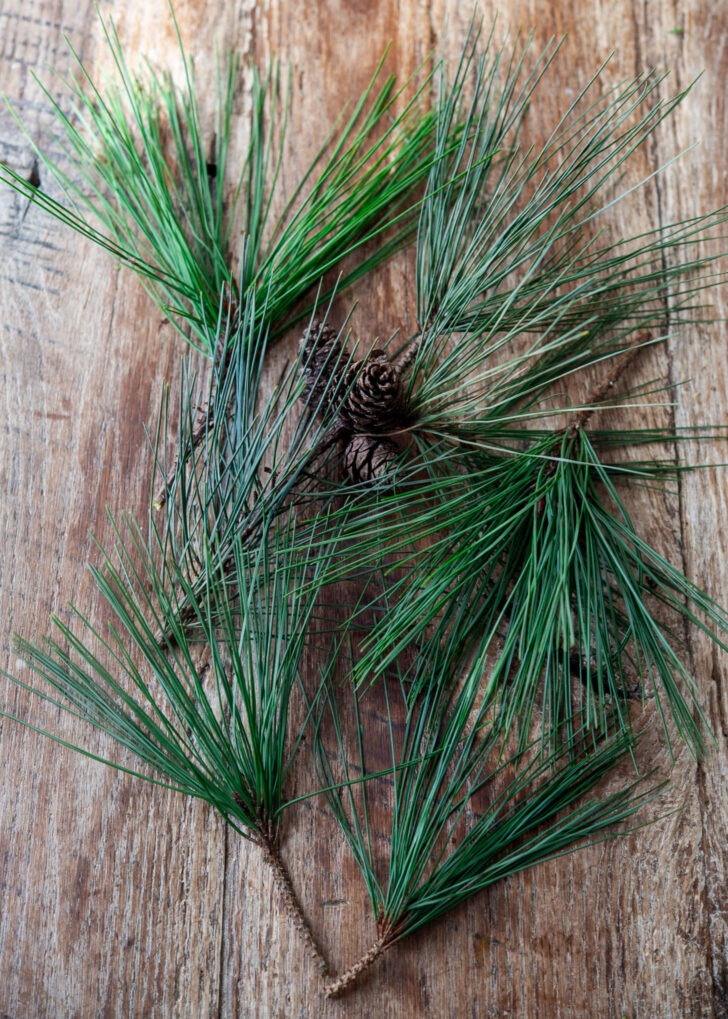
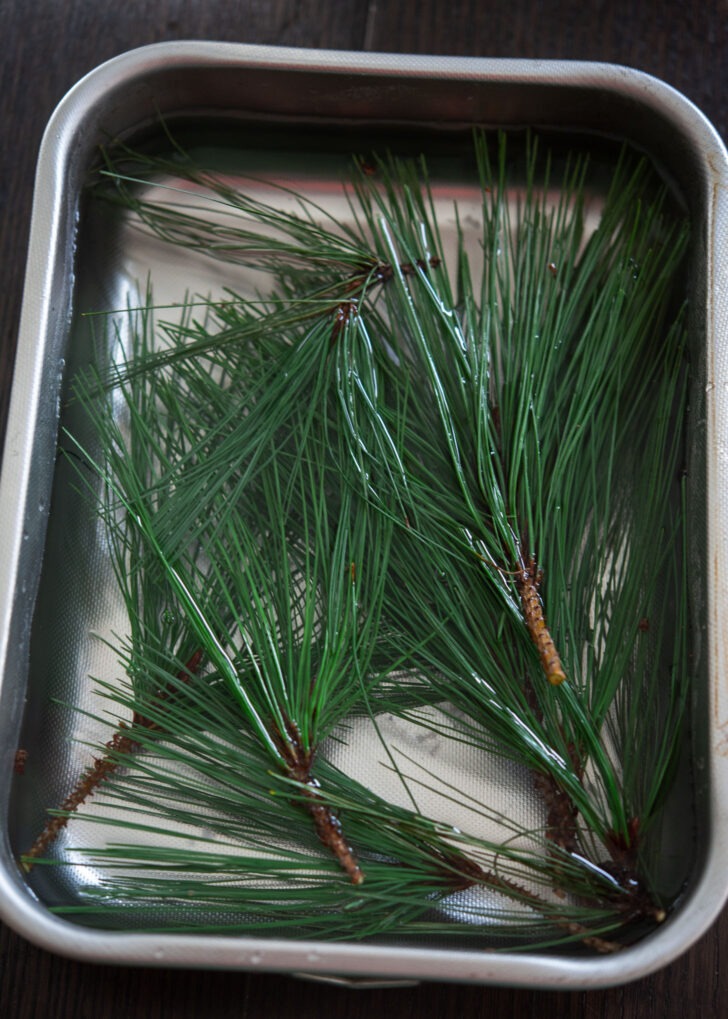
Pine needles (optional but special):
Traditionally, songpyeon is steamed over a bed of pine needles, which infuse the rice cakes with a subtle forest aroma and keep them from sticking. Before refrigeration, pine also helped extend their freshness during the holiday.
In Korea, families often collect a bundle from nearby trees just for Chuseok, rinsing them well before use. If pine needles aren’t available where you live, you can still make beautiful songpyeon—line your steamer with a damp cloth or silicone mat instead.
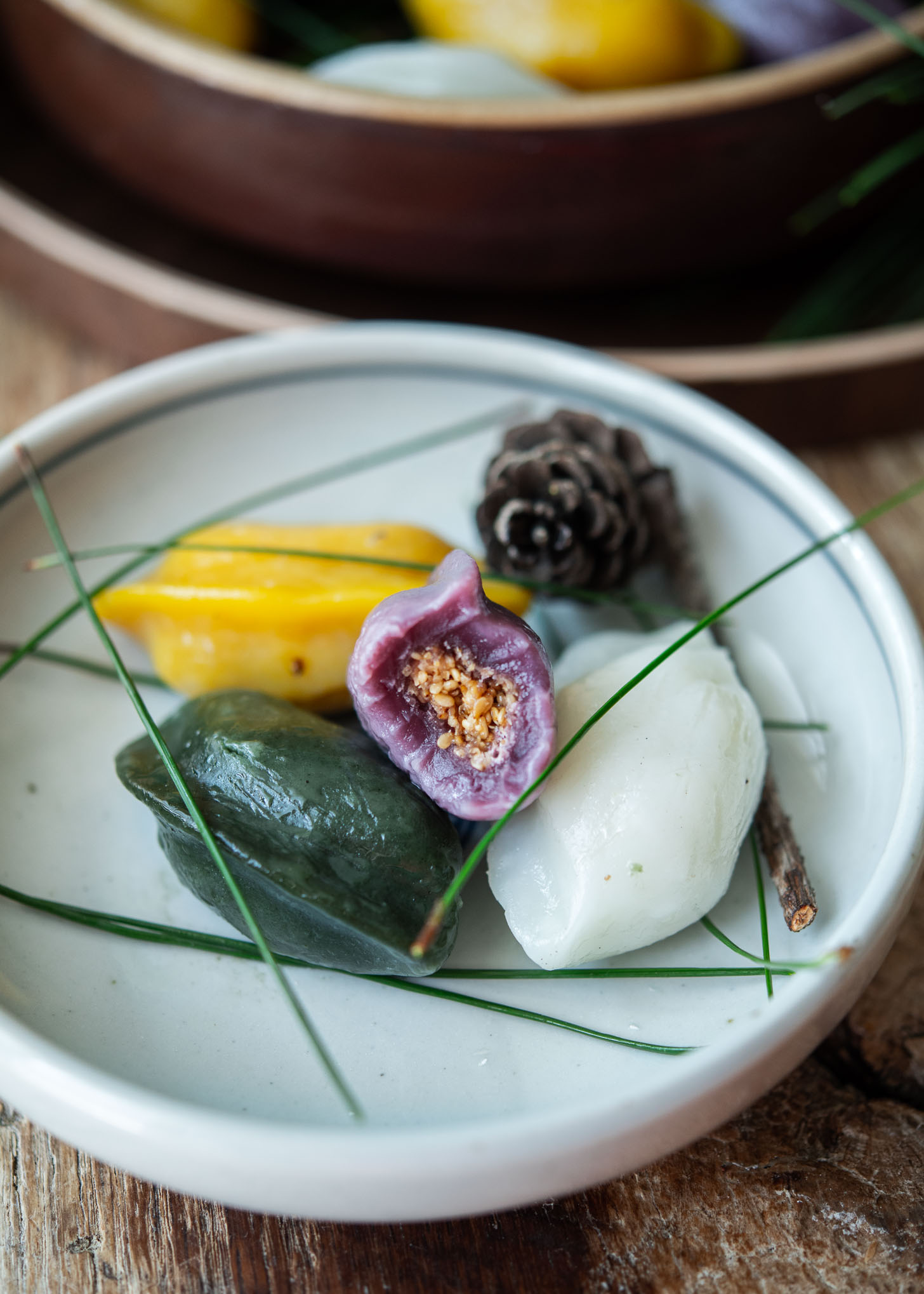
How to make Songpyeon
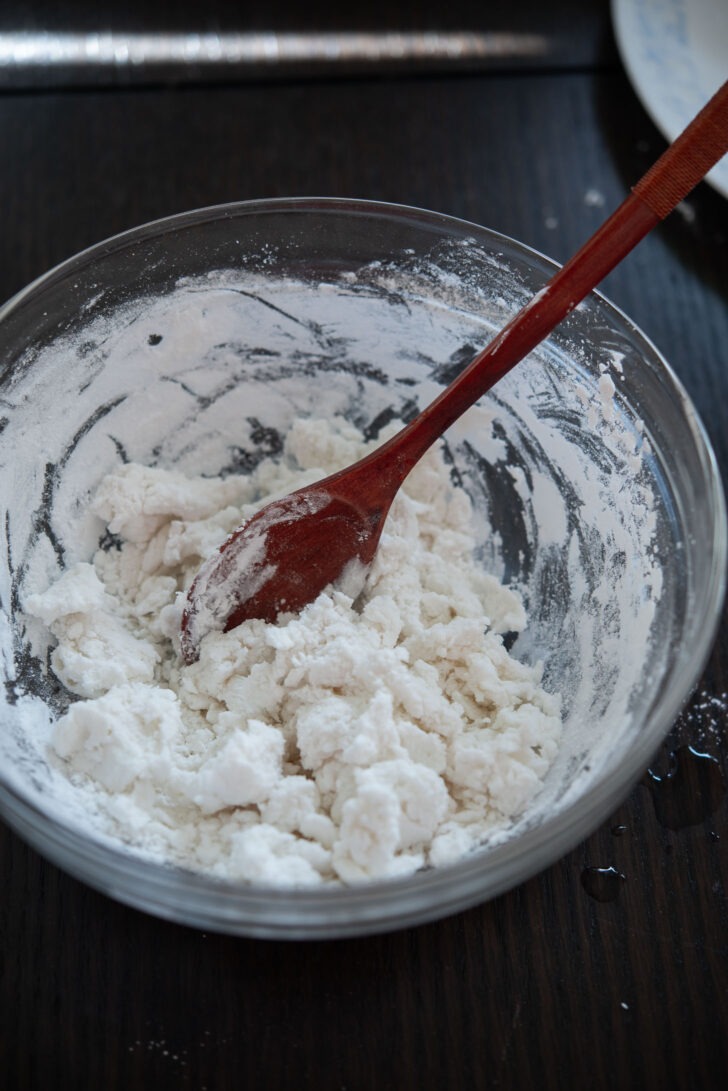
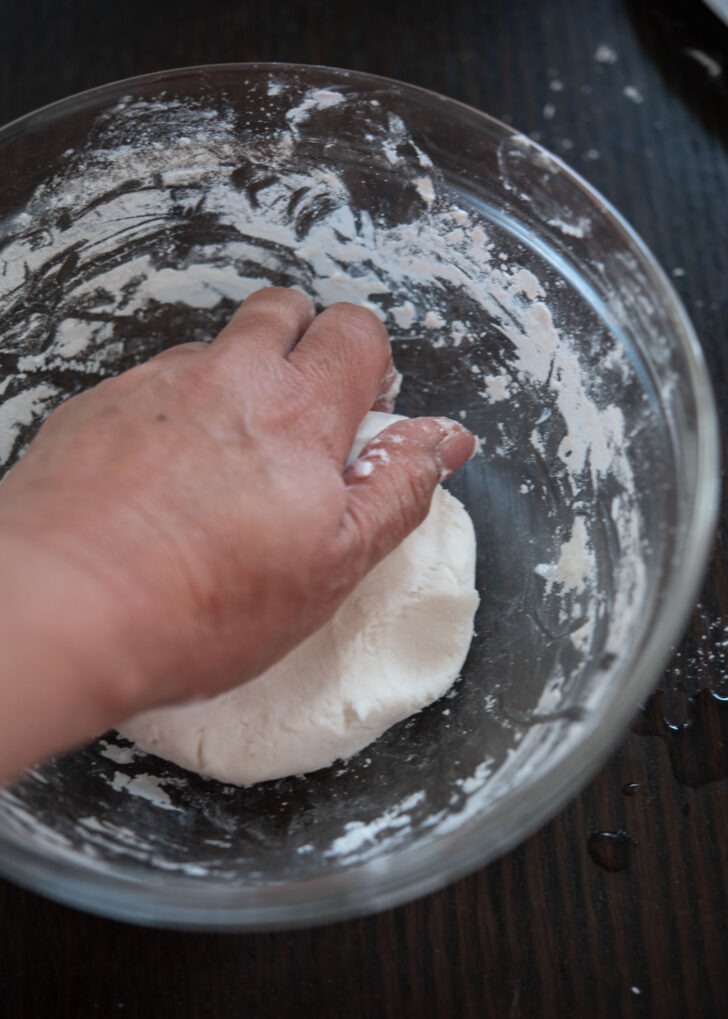
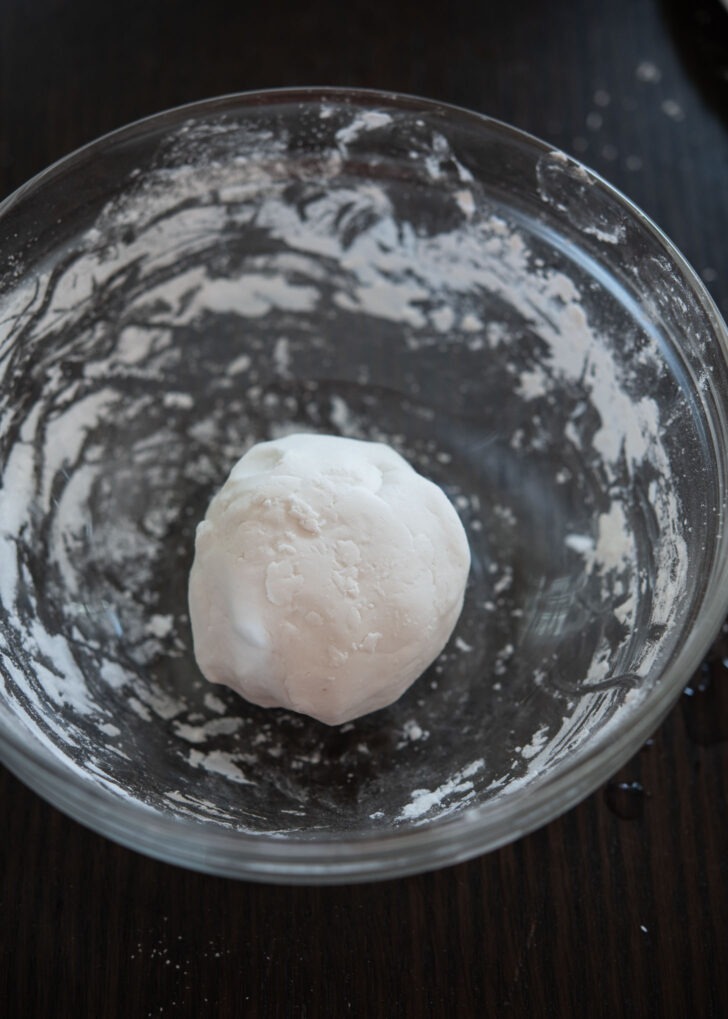
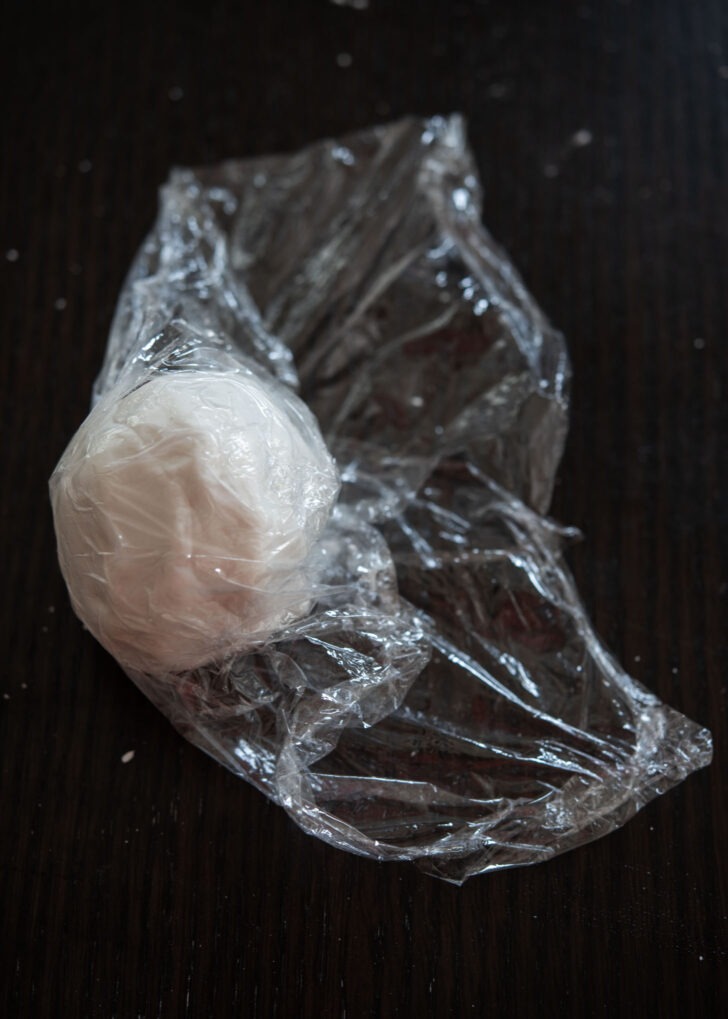
Make the Dough. Mix wet rice flour, salt, and hot water until soft and slightly springy—like pressing your earlobe. Knead a few minutes for elasticity, then cover and rest the dough.
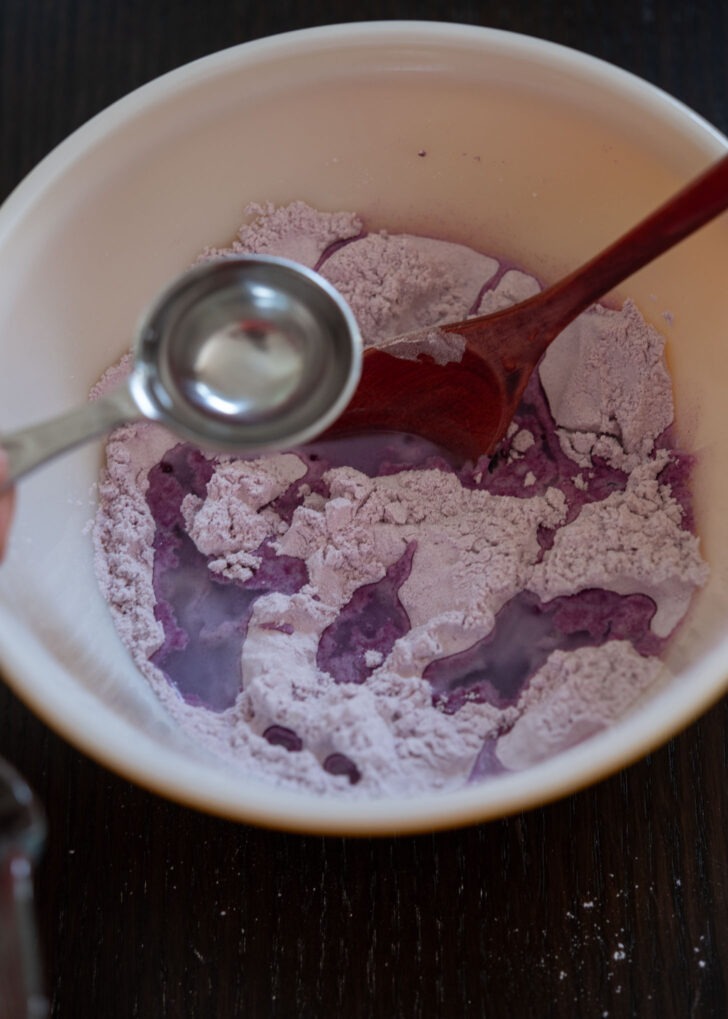
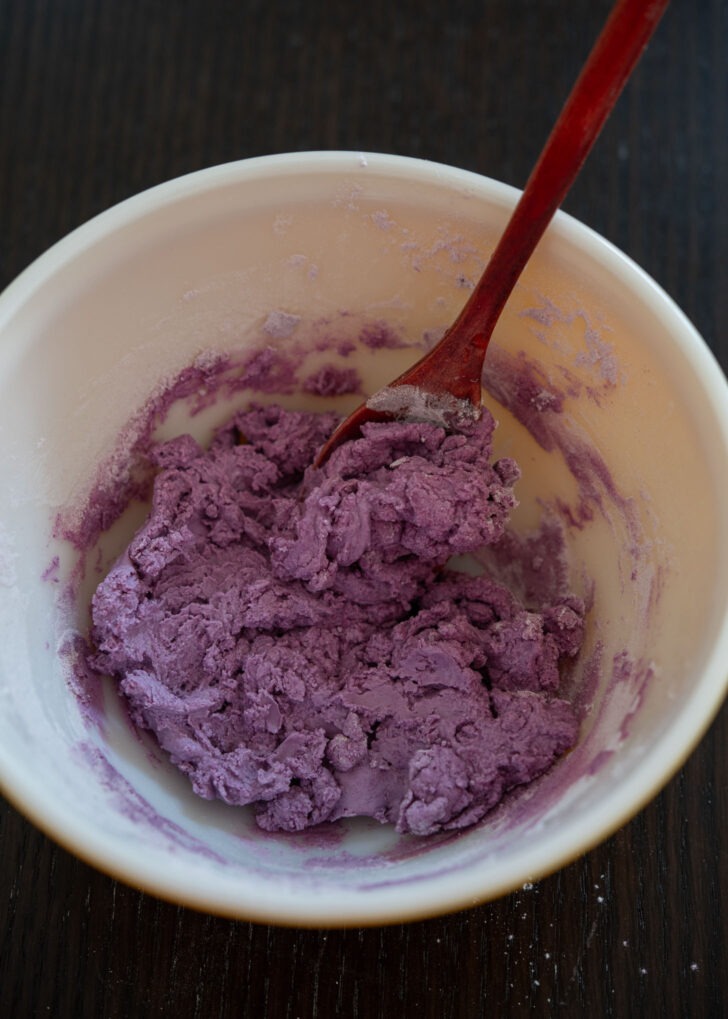
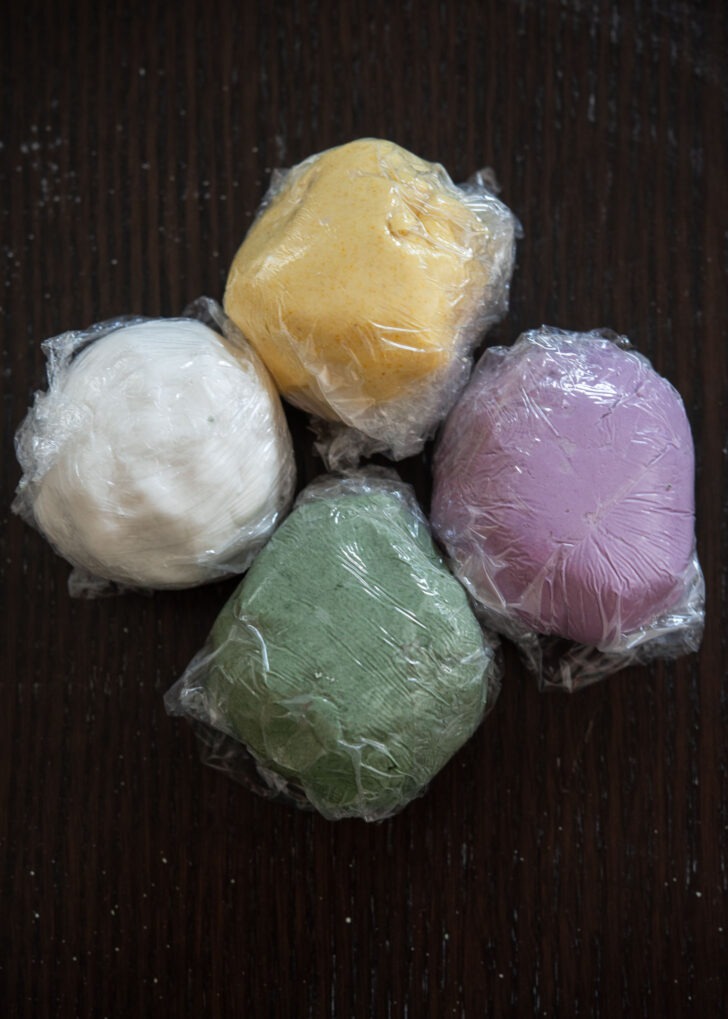
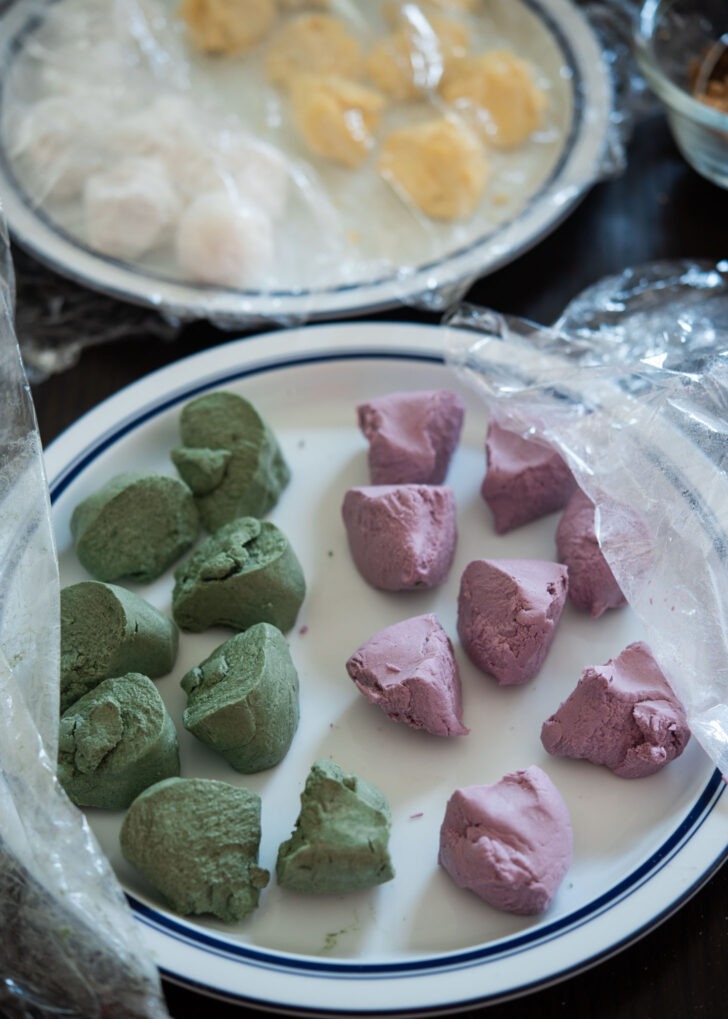
Color the Dough. Add natural food powder (pumpkin, mugwort, purple sweet potato) to the dry mix. I usually start with about 1 tablespoon per batch for each color. You can adjust the amount for the intensity you desire. Add hot water gradually and knead until smooth and pliable.
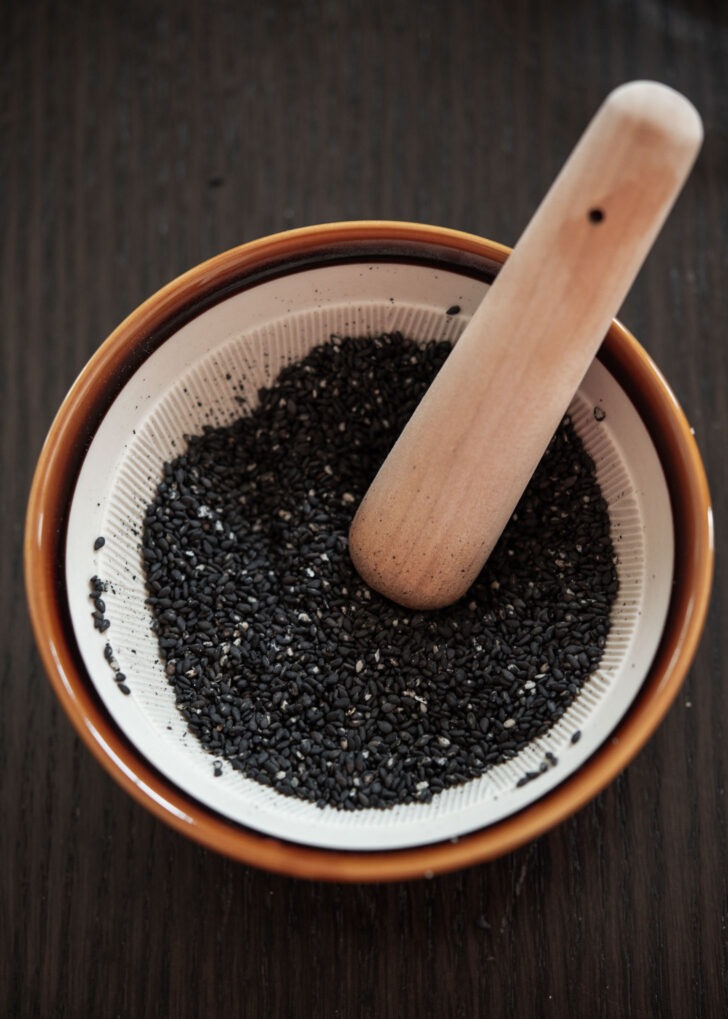
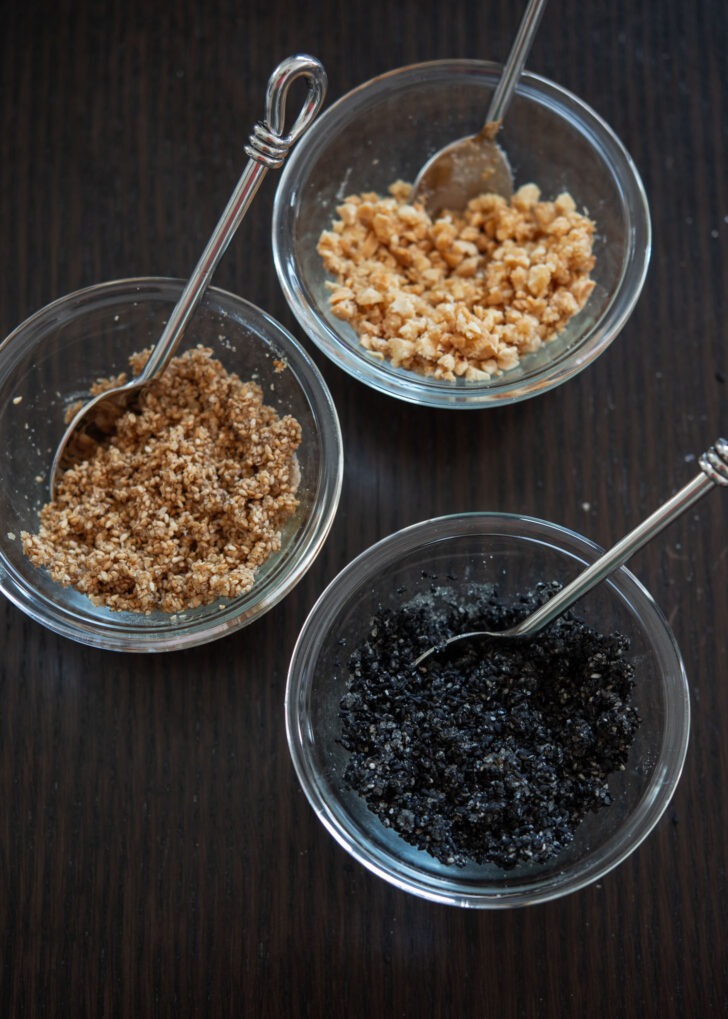
Make the Sweet Fillings. Toast sesame seeds (I use both regular and black sesame seeds) and grind them coarsely, then mix with sugar and honey. Chestnut, peanut, or red bean fillings are also traditional options.
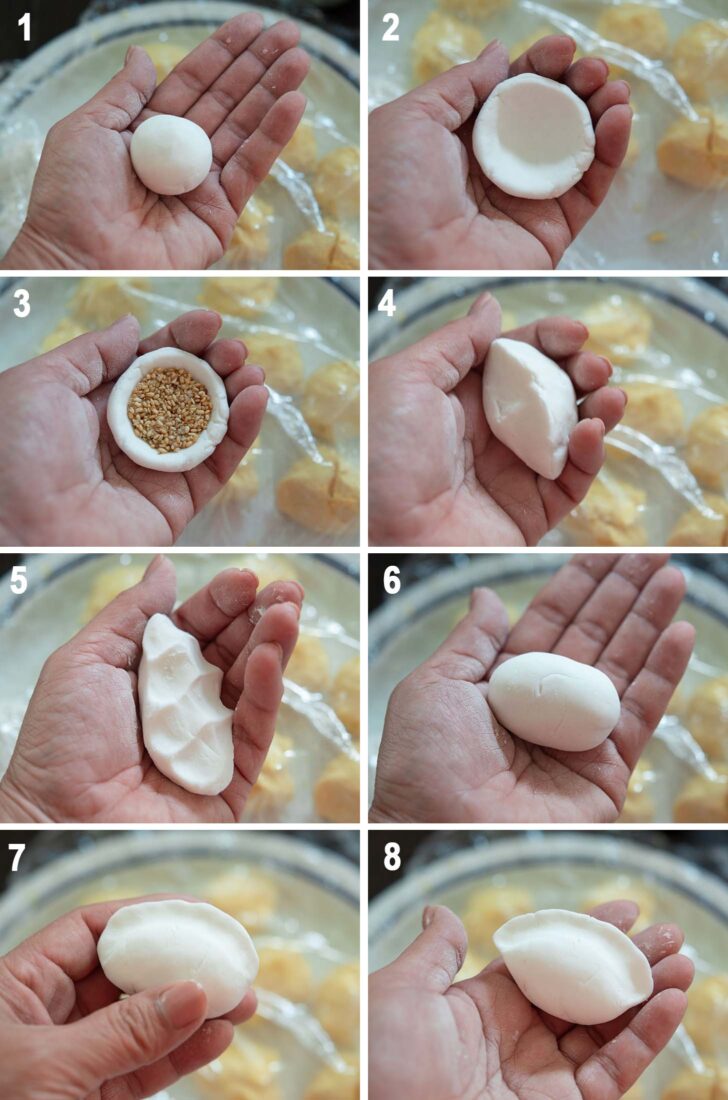
Shape the Cakes. Roll the dough into small balls, then press a pocket in the center with your thumb. Spoon in about a teaspoon of filling, seal the edges firmly to push out any air, and smooth the cake between your palms. Finish by pinching it into a neat half-moon shape.
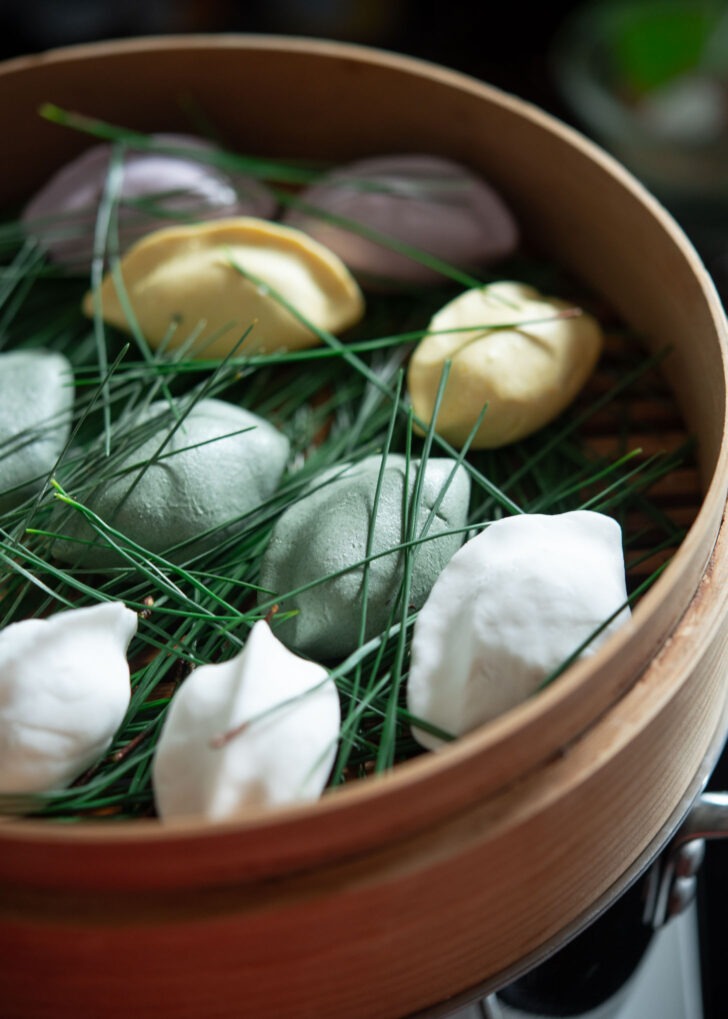
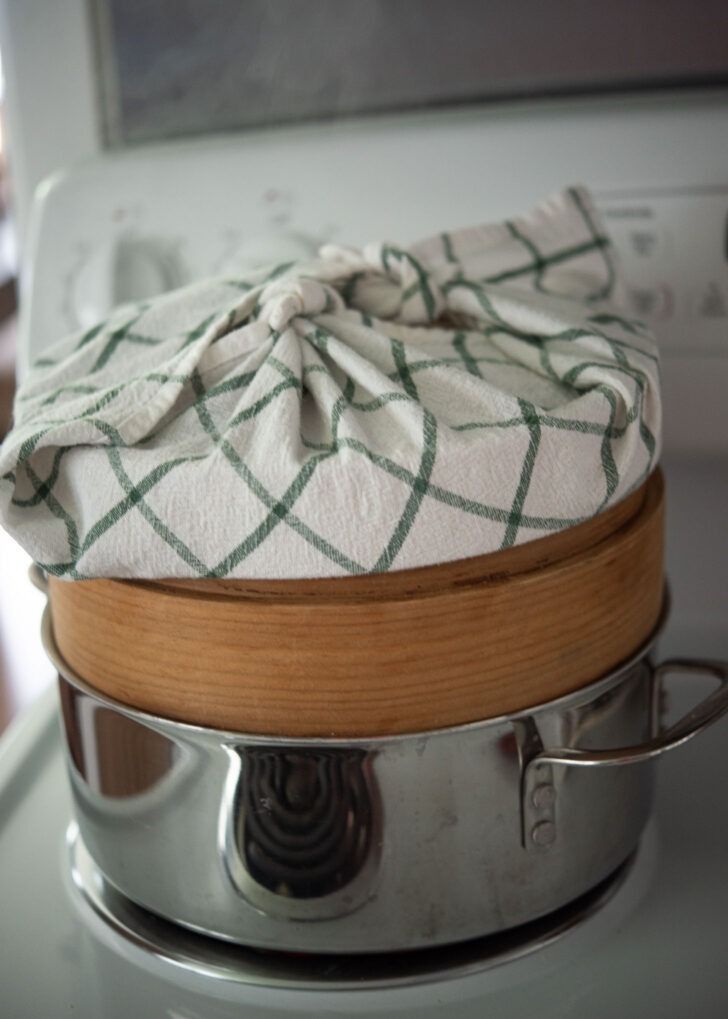
Steam. Line the steamer with pine needles (or a damp cloth) and arrange the cakes with space between them. Steam about 20 minutes, until the surface looks slightly translucent.
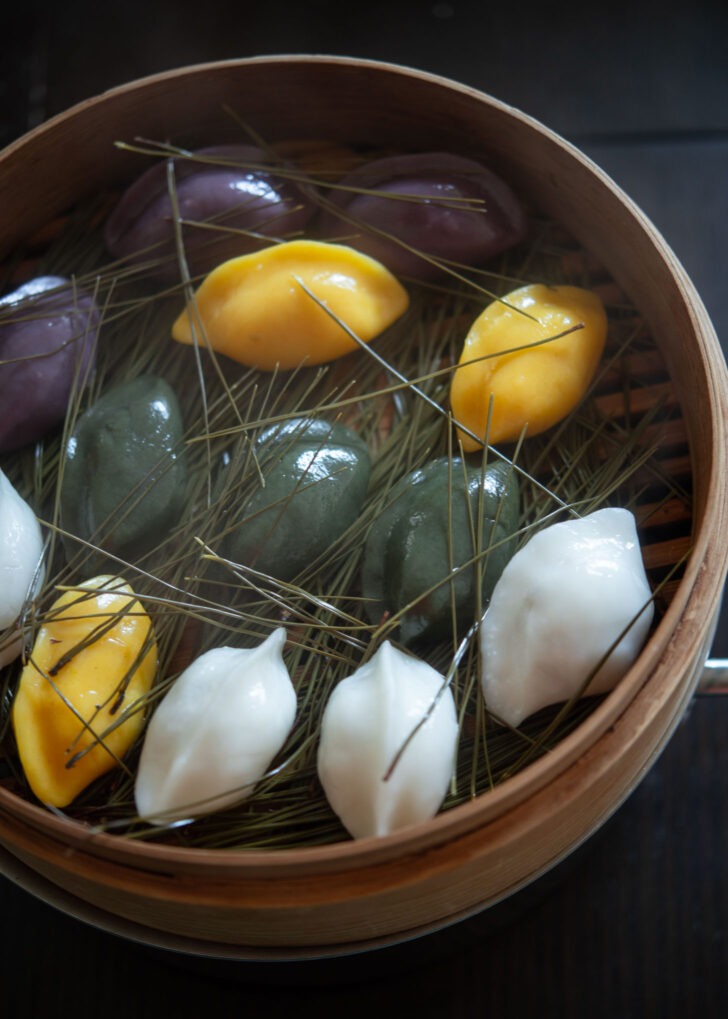
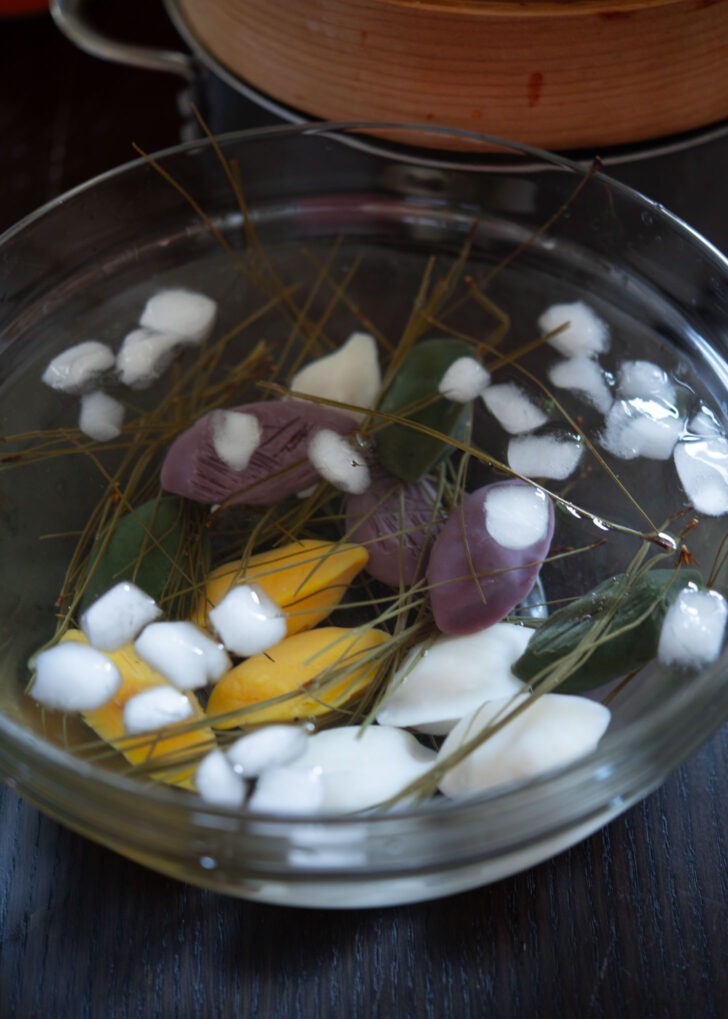
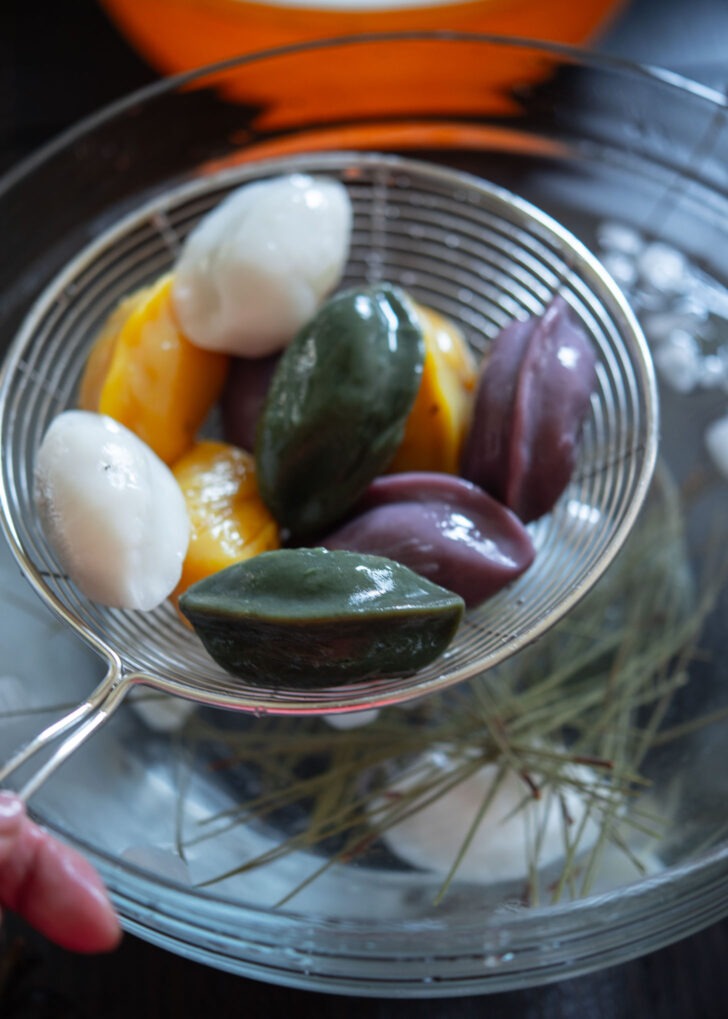
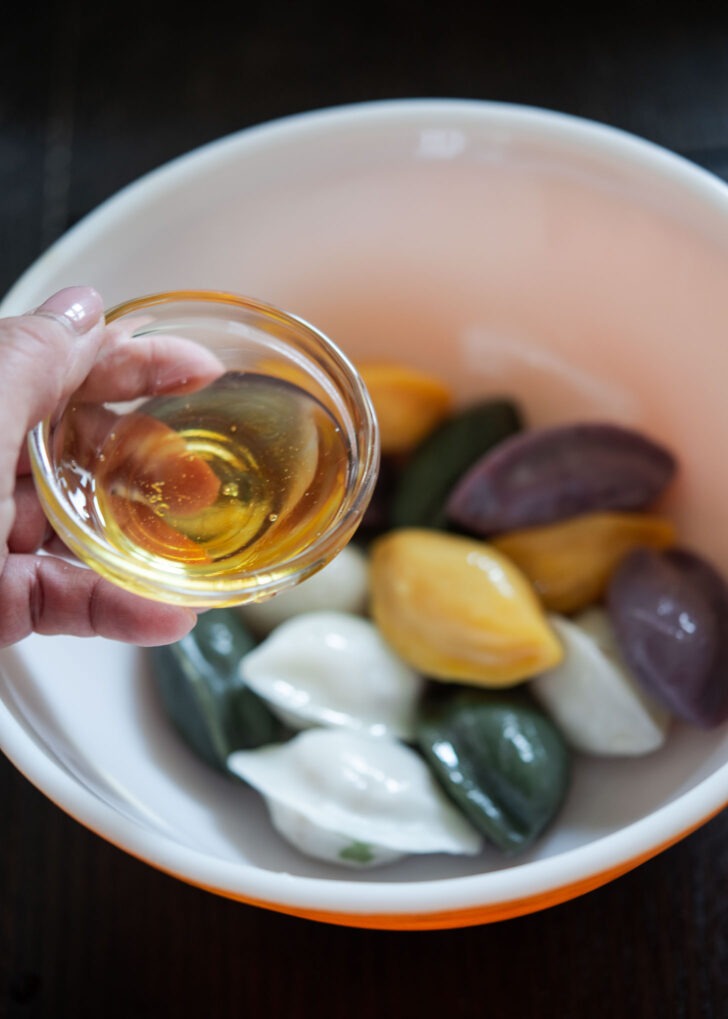
Finish. Dip the hot rice cakes briefly in ice water to set their shape, then drain well. Coat lightly with sesame oil for shine and softness.
Enjoy your songpyeon warm or at room temperature. During Chuseok, these rice cakes are often enjoyed alongside other festive treats like sikhye (Korean rice punch) or injeolmi (sweet rice cake coated in bean powder). Together, they make a holiday table that feels both traditional and celebratory.
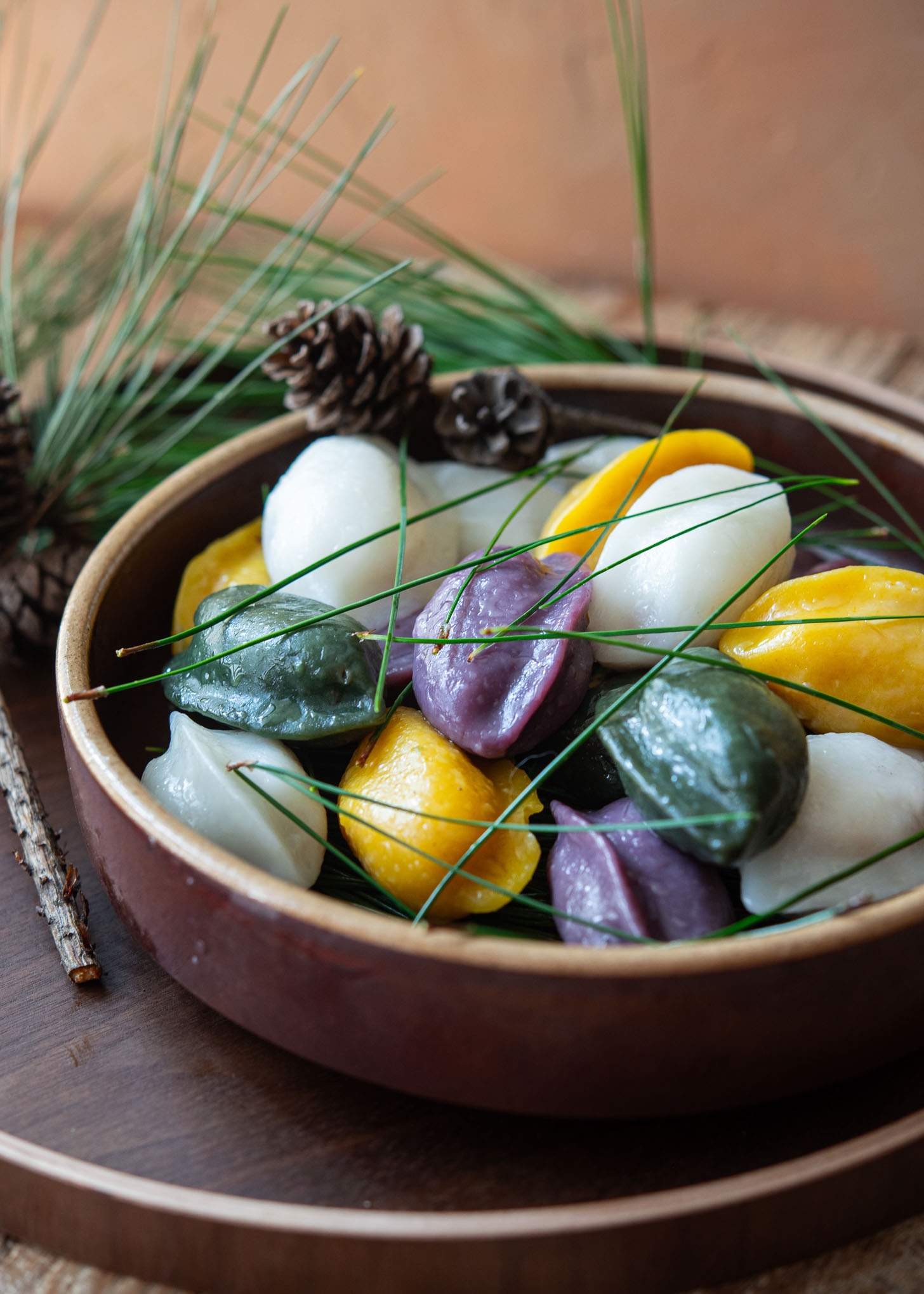
Helpful Tips
Using dry rice flour: If wet flour isn’t available, hydrate dry short-grain rice flour by sprinkling in about 3 tablespoons of hot water, rubbing it between your palms, then sifting. Cover and rest it in the refrigerator for several hours or overnight. This step gives the flour time to absorb moisture, preventing grainy dough and cracks during steaming.
Work with warm dough: Songpyeon dough becomes stiff as it cools, so knead and shape while it’s still warm for the best texture and easier handling.
Keep fillings modest: A teaspoon is enough. Overfilling can split the dough during steaming and cause the sweet mixture to leak out.
Press out air pockets: Before sealing, squeeze the dough gently to push out trapped air. Air pockets expand with heat and can crack the cakes.
Steam smart: Always wrap the steamer lid with a kitchen towel. It absorbs condensation so droplets don’t fall onto the cakes, which would make them soggy.
Storage & Freezing
- Room temperature: Songpyeon keeps best at room temperature for 1–2 days in an airtight container. After that, the texture begins to harden.
- Freezing: For longer storage, place the rice cakes on a tray to freeze individually, then transfer to a freezer bag or container. This prevents sticking and lets you take out only what you need. They’ll keep for up to 2–3 months.
- Reheating: To enjoy again, steam briefly straight from frozen or after thawing. This restores their chewiness. Avoid microwaving—rice cakes turn tough and rubbery.

Love this recipe? Rate it and share your experience in the comments below! On Instagram? Tag me to showcase your creation. For more delicious recipes, subscribe to our newsletter!
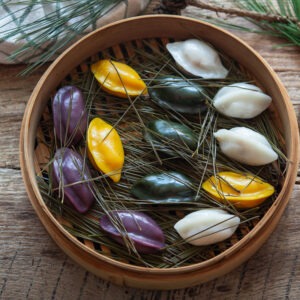
Songpyeon (Korean Chuseok Rice Cake)
Recipe Video
Ingredients
- 4 cups (480 g) frozen wet rice flour, see note below
- 1/2 tsp salt
- 12 oz (340 g) pine needles, soaked in water for 10 minutes, optional
- 2 tsp (10 ml) sesame oil mix with 2 tsp vegetable oil
For basic white songpyeon dough
- 1 cup (120 g) frozen wet rice flour
- 1/8 tsp salt
- 2-3 tbsp (30–45 ml) hot water, more as needed, in 1 teaspoon gradations
Other colored songpyeon (yellow, green, and purple dough)
- 1 cup (120 g) frozen wet rice flour, per each batch
- 1/8 tsp salt, per each batch
- 1 tbsp (15 ml) pumpkin powder, mugwort powder or purple sweet potato powder, per each batch
- 2 1/2-31/2 tbsp (37–52 ml) hot water, more as needed, in 1 teaspoon gradations, per each color
Sweet filling (for sesame seeds) – fills 1 batch
- 1/4 cup (30 g) toasted sesame seeds, coarsely ground
- 1 tbsp (12 g) sugar
- 2 tsp (10 ml) honey
For other sweet filling options
- 1/4 cup (30 g) black sesame seeds, or finely chopped peanuts or walnuts
- 1 tbsp (12 g) sugar, per each filling
- 2 tsp (10 ml) honey, per each filling
Equipment
Instructions
Preparing the Dough
- For plain dough: In a bowl, mix rice flour and salt. Add hot water gradually, stirring until the dough comes together. Knead 4–5 minutes until smooth and pliable, then cover with plastic wrap and rest 20 minutes. T
- For colored dough: For each color batch, Mix rice flour with natural powder, add hot water gradually, and knead until smooth. Rest covered.
Make Sweet Fillings
- Sesame Filling: Coarsely grind toasted sesame seeds with a mortar and pestle. Transfer to a bowl, add sugar and honey, and mix until evenly moistened.
- Peanut filling: In a separate bowl, combine the chopped peanuts with sugar and honey.
Shaping Songpyeon Dough
- Begin by tearing off a small piece of the dough, enough to create roughly a 1-inch ball. Roll the dough tightly between your palms to form a smooth ball.
- Press your thumb into the ball to create a well in the center. Then, using both thumbs, gently push outwards on the inner walls of the well to slightly expand the opening.
- Place approximately 1 teaspoon of your chosen filling into the well. Seal the dough tightly by pinching the edges together. Lightly squeeze the entire rice cake in your palm to eliminate any trapped air. Then, gently roll it between your palms to achieve a smooth surface.
- Form the rice cake into an oval shape. Lastly, pinch along the sides to create a wing-like appearance. Repeat these steps until you have shaped all the dough and used up the filling.
Steaming and finishing touch
- Line a steamer with pine needles or a damp cloth. Arrange rice cakes, cover the lid with a towel, and steam 18–20 minutes until translucent. Cool briefly in ice water, drain, and coat with oil mixture.
Notes
- Frozen wet rice flour is sold in Korean grocery freezers (preferred for best texture).
- If using dry rice flour, see Helpful Tips above for how to rehydrate.
- For authentic flavor, steam over pine needles if available; otherwise use a damp cloth or silicone liner.
- Songpyeon are best enjoyed fresh but can be frozen and re-steamed later.


Hello !
I love Songpyeon and look forward to use your recipe.
Can we use needles from any specie of pine trees or do we have to be careful which ones we choose from ?
As long as the pine tree has long needles, it should work fine.
The video is so bright and hard to see what you’re doing. I’m very interested in this recipe and a visual presentation would help me in making this yummy looking 떡.(Maybe the prob is just on my iPad?). Thx.
I’m sorry to hear that it’s difficult to see the video. Unfortunately, I can’t change the brightness after the video is imported. I recommend adjusting the brightness of your device’s monitor screen to see if that helps.
Hi Holly. I was able to watch it on my android phone. I still can’t watch it on my iPad. Weird.
Anyway, love your recipes! I especially love the simple quick yaki udon. Flavor is amazing and even my friend who’s not a big fan of cabbage (go figure😁) loved it when I made it for her a while back. Now she makes it all the time for her family. Thx for your simple to follow recipes!